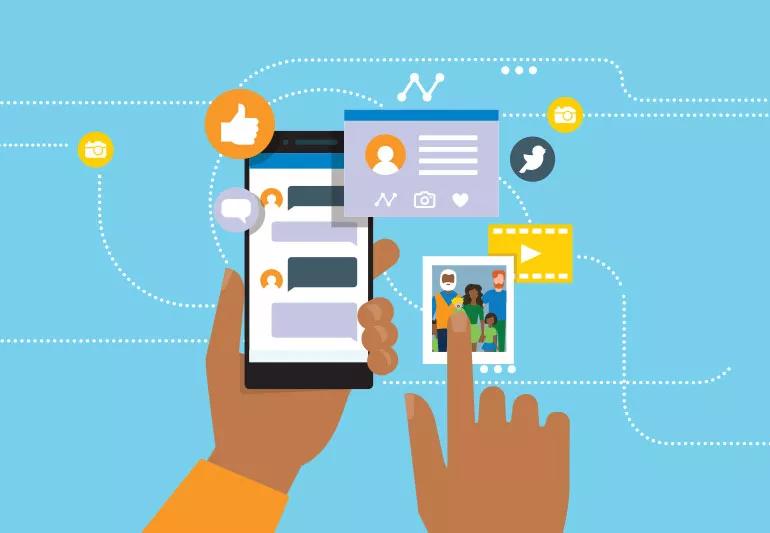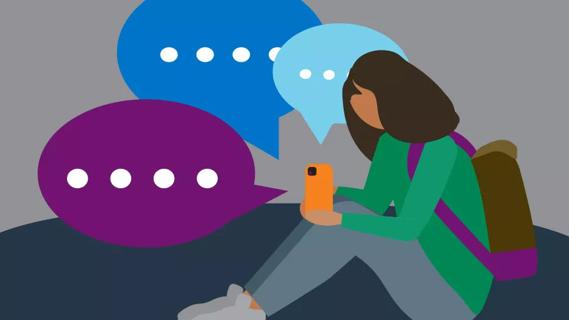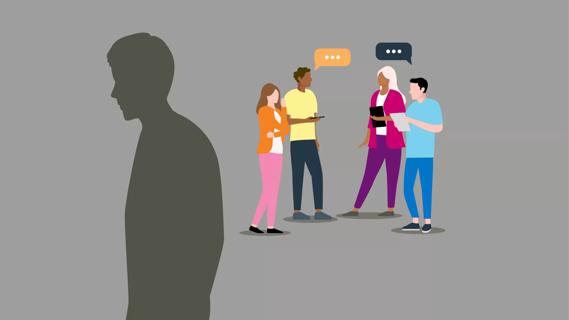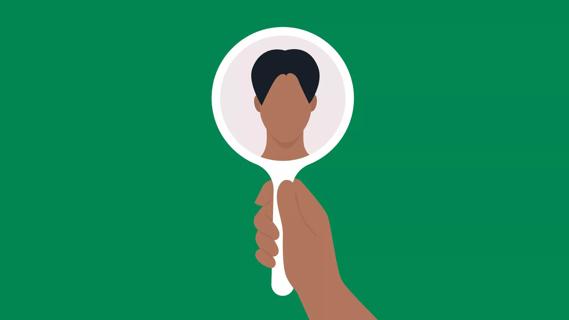Filters and editing can lead to low self-esteem, depression and even body dysmorphic disorder

It’s normal to feel self-conscious about a picture of yourself from time to time, but when does self-judgment go too far? Selfies and filters have created a culture of insecurity and comparison that can be hard to drown out.
Advertisement
Cleveland Clinic is a non-profit academic medical center. Advertising on our site helps support our mission. We do not endorse non-Cleveland Clinic products or services. Policy
“For the first time in human history, we’re carrying around devices that we use to take and share photographs,” says facial plastic and reconstructive surgeon Patrick Byrne, MD. “That has led to an obsession with appearance as it appears on a screen, which has fundamentally changed the challenges people face.”
Dr. Byrne explains how social media can affect your self-image and how today’s photo-editing culture has amplified a condition called body dysmorphic disorder.
Filters and photo editing apps have made it easy to take the “perfect selfie.” But you may not realize exactly how much editing is going on behind the scenes of what we see posted on social media.
“When you go to post your own picture or even appear on a Zoom call, you may be shocked and disappointed by the fact that you don’t look as glamorous or as perfect as what you see on social media,” Dr. Byrne notes. “For some people, this can be a source of anxiety and even shame.”
That anxiety and shame can quickly turn into self-esteem issues and even body dysmorphic disorder (BDD), a mental health condition in which you’re consumed by thoughts about how you look and the defects you think you see.
“Body dysmorphia is characterized by an overwhelming concern for one or more physical flaws,” Dr. Byrne explains.
Advertisement
No. Struggling with your self-image doesn’t automatically equal body dysmorphic disorder, which is a specifically diagnosed condition. People with BDD are so consumed by thoughts of their perceived flaws that they may have trouble maintaining a job, be too anxious to leave the house, and deal with depression and substance abuse.
But even if you don’t have body dysmorphia, you can still face very real self-esteem concerns that start with or are made worse by what you see on social media.
“Everybody can feel these things sometimes,” Dr. Byrne clarifies. “Some of the traits that we see in body dysmorphic disorder we also see in people who don’t have this condition.”
Have you ever looked in the mirror and liked what you saw … but then looked at a photo of yourself and hated it? Dr. Byrne says he often sees this happen in his office, when patients come to see him about their perceived flaws. They’ll look into a mirror and tell him, “Well, you can’t really see it here,” or “It’s not really showing up.”
“Then, they instinctively pull out their phone and start showing us that their nose is too big or too crooked,” he continues. “That’s an incredible dynamic, to suggest that an image on your phone is more reflective of reality than the actual physical you who’s sitting in the room.”
One study of teen girls found that the more time they spend using social media, the more likely they were to experience “body dissatisfaction” and even depression. But teens aren’t the only ones who can have these internal responses to what they see online.
“Everyone is prone to concerns about their appearance or having certain features they wish they could change,” Dr. Byrne concedes. “From typical concerns about wishing you could look a little different, all the way to the extreme end of body dysmorphic disorder, there are a lot of shades of gray in between.”
Let’s dig a little deeper into some of the reasons why social media can be so deceptive — and can make you feel so bad.
These days, you can easily edit photos to your liking, from simple FaceTune “fixes” to TikTok filters that completely change your features, to nearly undetectable AI tools that can warp the size and shape of your body.
“We see that filters and editing tools are driving a lot of self-concern and anxiety,” Dr. Byrne says. “When you don’t like the way you look on screen, you can just magically fix it with the swipe of your finger on the screen.”
One British report studied 175 women and nonbinary people ages 18 to 30. It found that 90% of respondents had used a filter or photo-editing tools to change their photos before posting them online.
Advertisement
The average American checks their phone 144 times a day, which can mean seeing a lot of your face (and others’) on social media. That constant exposure can take a toll.
“Even before filters, we started to see that many people believe they look worse than they do,” Dr. Byrne says, “and they care more because they’re subjected to their own imagery all the time on social media platforms.”
Plus, many of us now work remotely, staring at our own images all day long — not just on social media but also on video calls with colleagues.
“People are on screens for virtual meetings for hours a day, often with unfavorable viewing angles and poor lighting,” he adds. “Sometimes, people come in saying they need a neck lift, and when we ask what prompted it, they say, ‘I’ve been staring at my neck on Zoom all day.’”
What you see on your phone isn’t actually what others are seeing in real life. And even without filters, technology isn’t always telling you the truth.
The mirror-image function (where selfies are backward from the way you actually look) can confuse you into thinking that your face is exaggerated in size and symmetry. And one study found that selfies can distort facial proportions, making your nose look up to 30% larger than it is.
Advertisement
“There are a number of ways that technology introduces cognitive distortions,” Dr. Byrne explains. “For example, we take high-depth professional studio images of our patients — but sometimes, people see that accurate version of themselves on our screen and they get confused and can’t even point out what they think the problem is. They’re basing their self-image on a medium that oftentimes distorts their facial features.”
There’s an old saying that “Comparison is the thief of joy,” and nowhere does that seem to be truer than on social media.
Even in the early 2010s, long before the evolution of today’s filters and photo-editing technology, studies found that using social media (in those days, mostly Facebook) led users to compare themselves and their bodies to other people’s.
“People are becoming progressively more image-obsessed, and I think that the progression of social media algorithms drives some of that,” Dr. Byrne reflects. “It really is an unhealthy dynamic, especially for young people who are still developing their self-esteem.”
So, what’s the solution? Well, as with so many other things in life, there’s no simple way forward. But here are some steps you can take to try to rein in your tendency to judge yourself and to stop the comparison game in its tracks.
Advertisement
Take breaks from social media
If your social media use has your self-esteem in a free fall, it’s time to step back. Know when it’s time to unplug, and practice going analog by limiting your time online, scheduling your social media use and embracing mindfulness techniques.
Acknowledge technology’s limitations
Remember: You’re a whole, 3D human, and that’s how other people see you — in motion, on the go, vibrant and multidimensional. Photos and videos are just a snippet in time, and they’re not necessarily even accurate ones.
“Try to take digital data sources with a grain of salt,” Dr. Byrne advises.
Embrace imperfection
Did you know that only 2% of the global population has a symmetrical face? It’s pretty uncommon, and even symmetry doesn’t equal perfection.
“Every single face has ‘imperfections,’ or areas of the face that deviate from the aesthetic ideal,” Dr. Byrne notes.
Plus, most people’s brains actually aren’t very good at identifying or recalling the details of other faces, which means that you’re almost certainly seeing more “wrong” with yourself than anyone else is.
Work on self-love and acceptance
Back in 1999, the band Lit sang, “It’s no surprise to me, I am my own worst enemy.” This is true for so many of us, especially when it comes to self-esteem and what we think others are noticing about us.
“I hope you’ll realize that if you’re like most human beings, you probably are more critical of yourself than anybody else is,” Dr. Byrne says. “It’s important to try to choose more positive self-talk.”
Working on building a healthy self-image. And if body positivity seems too far out of reach, aim for body neutrality, a more middle-of-the-road approach focused on self-love and acceptance.
Take cues from confident people
You know the phrase, “Fake it ‘til you make it”? It might be easier said than done, but Dr. Byrne lets you in on a tip that can help you try.
“Patients who have a lot of self-confidence tend to cherry-pick memories of all the images of themselves that look good,” he says. “They assume that’s how they look to the world.”
If you struggle with self-esteem issues, you may be inclined to ignore or dismiss good images of yourself, calling them flukes. But think about it: If your go-to assumption is that bad photos of you are the most representative of the way you really look, why couldn’t the opposite just as easily be true?
Seek help if you need it
You might think that altering the way you look, like through surgery, fillers or injectables, will make you feel better. But that’s often not the case — especially for people with body dysmorphic disorder.
“At the most, 20% of the time, patients with BDD say that the procedures they underwent were helpful,” Dr. Byrne says. “But in my own clinical practice throughout the years, I think the answer is far, far less.”
Why? Because it’s not really about how you look but about how you think you look. BDD is a mental health condition, which means that it requires mental health treatment.
“Performing surgery or other cosmetic treatments on these patients doesn’t help them, which is why, if we have a strong suspicion that someone has BDD, we won’t operate,” Dr. Byrne states. “They’re not equipped to experience psychological benefits from cosmetic intervention, and they need to be helped in other ways.”
Cognitive behavioral therapy (CBT), a type of talk therapy, has been shown to help people who are dealing with a variety of mental health conditions and life situations, including:
CBT can be so helpful that plastic surgeons even recommend it to people who’ve had major facial surgeries.
“It helps people who have had reconstructive surgery realize that despite their worries, other people aren’t scrutinizing their facial details to the degree that they are,” Dr. Byrne says. “It’s a mental shift that takes practice and a change in habitual thought patterns over time.”
Be realistic about what procedures can do
It’s totally OK — natural, even — to want to change something about your body and to seek out cosmetic surgery, Botox® or some other type of procedure to do so.
But it’s also important to know what these procedures can and can’t do for you. Namely, they won’t change what’s on the inside.
“Changing your facial appearance, even when a successful operation is performed, won’t solve all of life’s problems,” Dr. Byrne says. “It can certainly help with your self-image, but you’ll still be the same person with all the same things going on in your life.”
Learn more about our editorial process.
Advertisement

Identify your triggers, set ground rules for your break and start practicing mindfulness

Connecting with others, going for a walk or focusing on sleep quality can help more than you might realize

Like being your own best friend in times of trouble, self-love is an act of self-preservation

It’s not about embracing your dark side — it’s about showing up for yourself

Foster communication about social media, encourage whole-person attributes and be mindful of your own negative self-talk

Like a boring ol’ grey rock, the goal is to be unresponsive and uninteresting to dissuade a harmful situation

Narcissistic personality disorder is a mental health condition, not an insult

Whether this behavior is abusive depends on the person doing it and their motivation

Type 2 diabetes isn’t inevitable with these dietary changes

Applying a hot or cold compress can help with pain